Complete Solutions to Exercises (Single Correct Answers Type) of chapter ALKYNES of Class 11 book with complete answers and questions
| Class 11 | CHEMISTRY |
| Chapter | ALKYNES |
| CENGAGE CHEMISTRY | Exercises (Single Correct Answers Type) |
| Number Of Questions | 30 |
| Academic Year | 2023-24 |
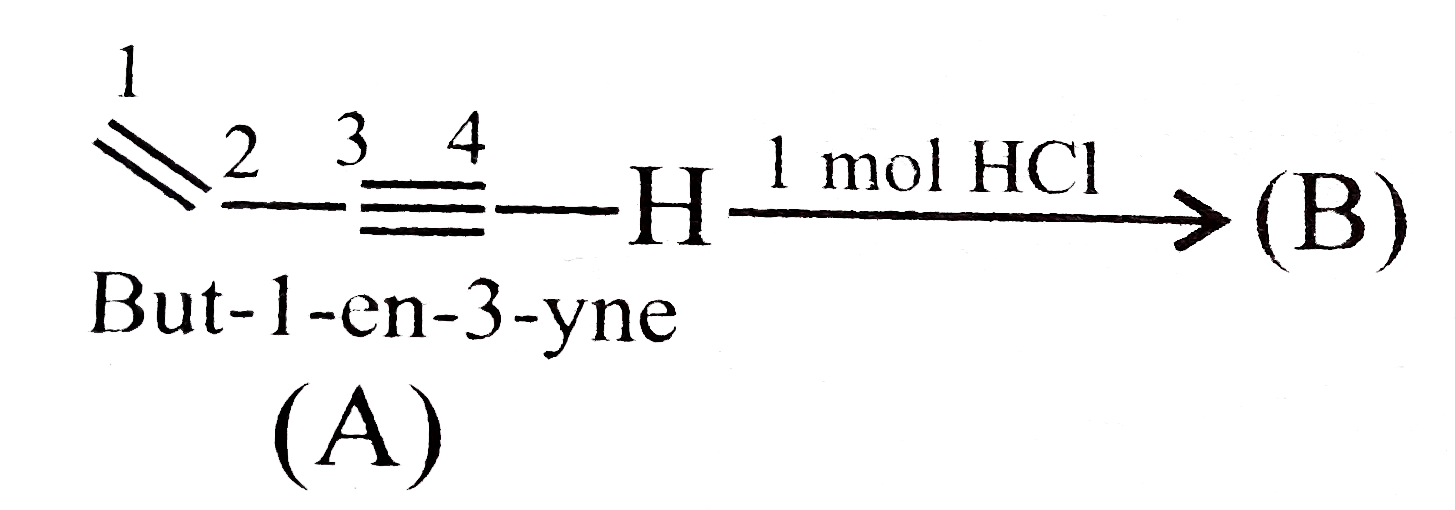
The product (B) is:02:28View Solution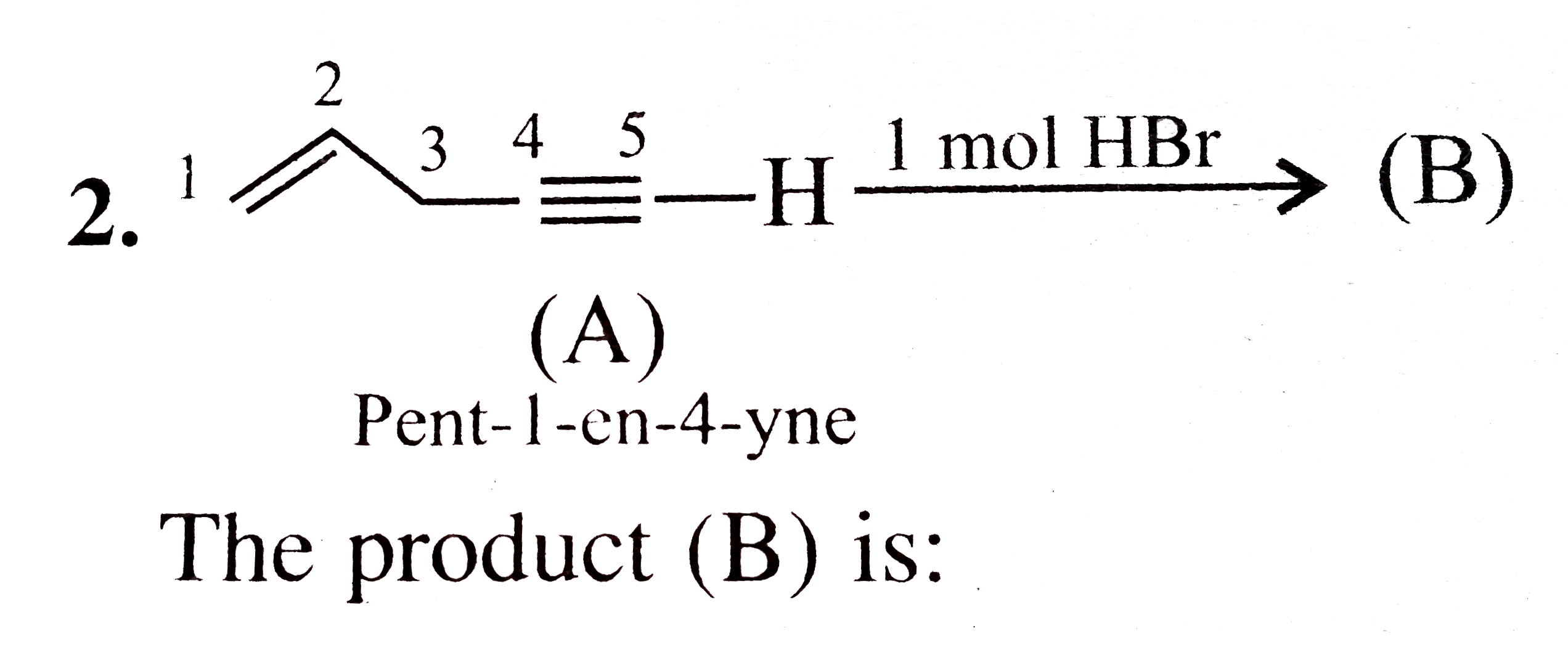
The product (B) is:02:40View Solution
The intermediate species formed in the above reaction is:01:55View Solution
The product (B):03:18View SolutionThere are two paths (a) and (b) for the preparation of a compound (A)
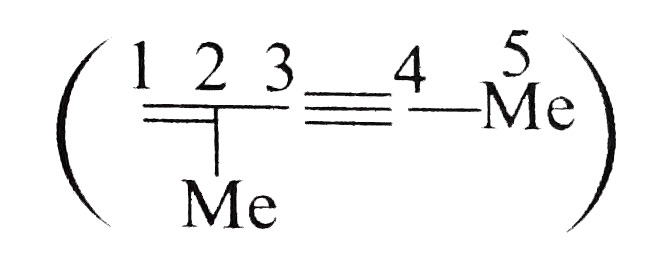 (2-methylpent-1-en-3-yne), which path is correct and why? Also name the path (a) and (b).
(2-methylpent-1-en-3-yne), which path is correct and why? Also name the path (a) and (b).
 03:18View Solution
03:18View SolutionGive the reactivity in the decreasing order of the following alkynes towards nucleophilic addition reaction with `MeO^(Θ)//MeOH`.
(I) 03:26View Solution
03:26View SolutionGive the reactivity in the decreasing order of the following nucleophiles towards nucleophilic addition reaction with compound `A(F_3C--=-CF_3)`.
(I) `CH_3O^(Θ)` (II) `C_3H_5^(Θ)`
(III) `CH_3COO` (IV) `CH_3SO_3^(Θ)`03:25View Solution
Vicinal dihalides undergo double dehydrohalogenation to give terminal alkyne. How many moles of `NaNH_2` are used in the overall reaction?03:12View SolutionThe minimum number of C atoms an alkyne must have to show diastereomerism:
02:01View SolutionWhich of the following is propargyl group?
01:32View SolutionWhat is the smallest ring that can accommodate a triple bond?
02:30View SolutionIn the conversion of alkyne to trans-alkene by Birch reduction using alkali metals (such as `Na` or `K`) in liquid `NH_3` and alcohol (`MeOH` or `EtOH`),
`R - -= - R overset(Na +liq. NH_(3))underset(+EtOH)rarr`
the mechanism takes place in the formation of intermediate species in the following sequence:04:45View SolutionIn the reaction, `R--=-Roverset(Birch)underset(reduction)rarr`
 source
source
of two H atoms which are added to alkyne to give trans-alkene is:03:52View SolutionIn the reaction:
 04:37View Solution
04:37View SolutionInterconversion of terminal to internal alkyne and vice versa takes place by the following reagents (A) and (B):

Reagents (A) and (B) are:01:36View Solution`R-underset((A))-=--=-Roverset("Lindlar's catalyst" +H_2)rarr(B)`

Compounds (B) and (C) are:03:12View Solution
Compounds (B) and (C) are:02:30View Solution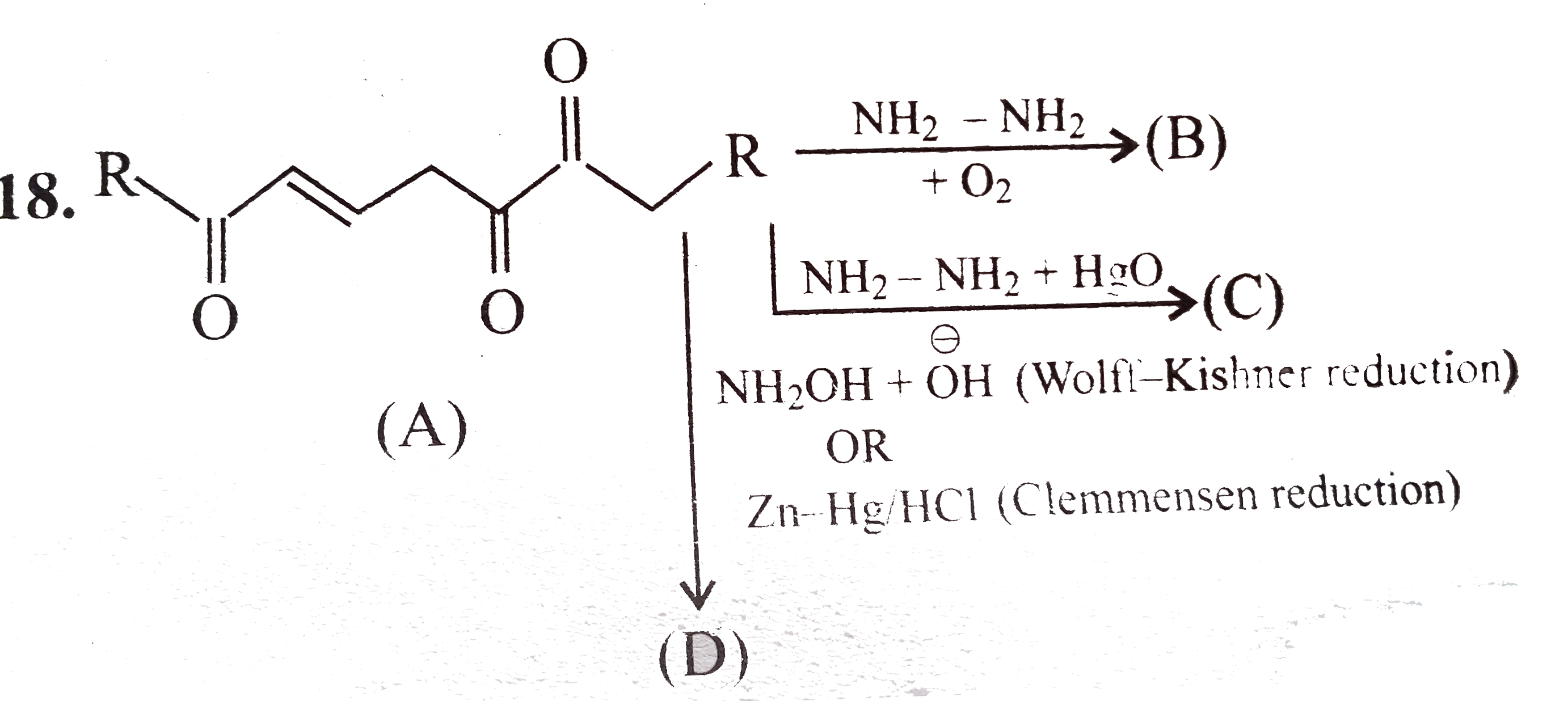
(B), (C), and (D), respectively, are03:13View SolutionExpand the following condensed formulas into their complete structural formulas.
`CH_3CH_2OH`02:09View Solution
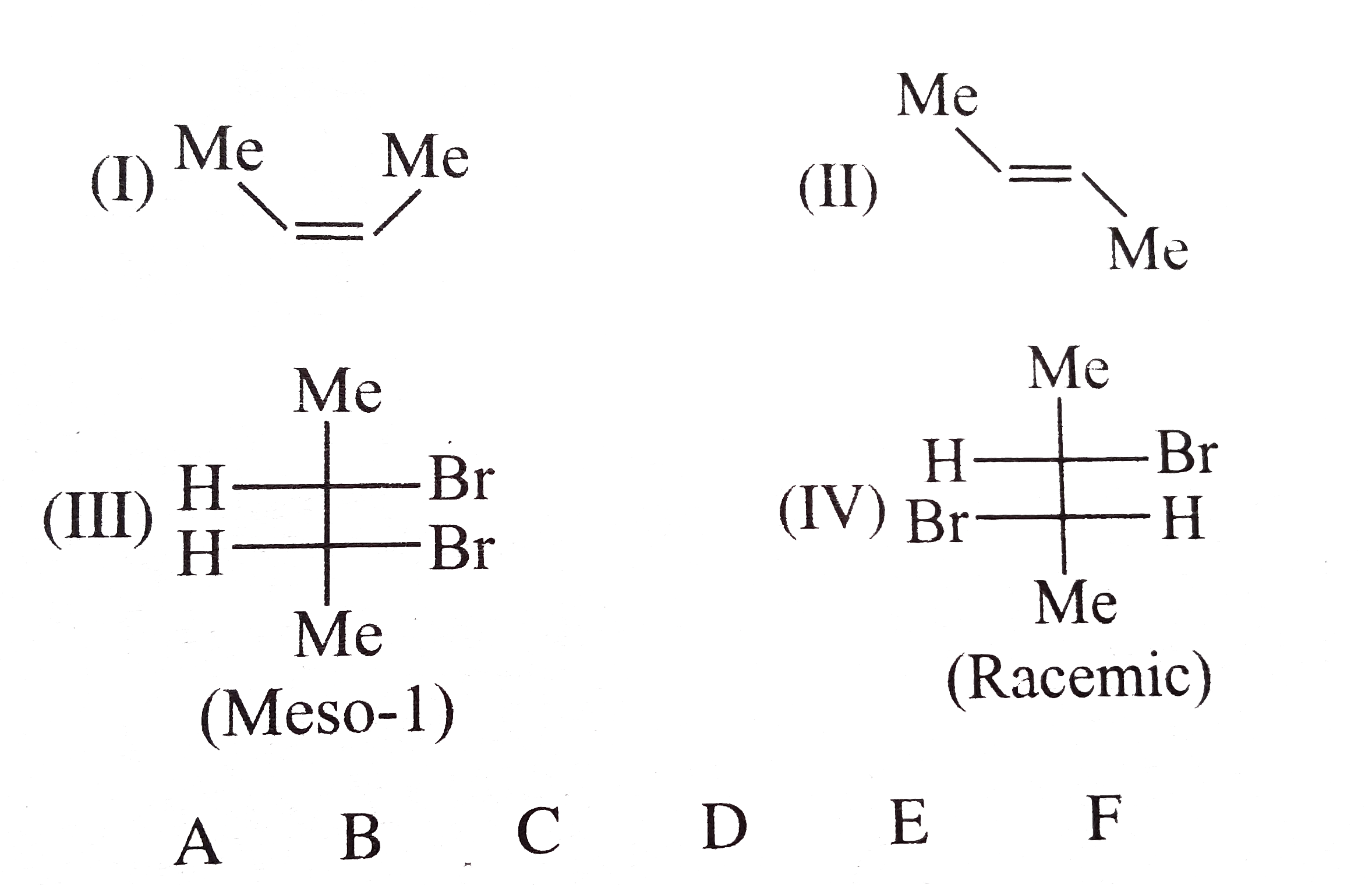 04:42View Solution
04:42View Solution 04:35View Solution
04:35View Solution
A, B, and C:05:05View SolutionCompound (X) on complete catalytic hydrogenation with `H_2//Pt` gives an alkane. The number of moles of `H_2` required per mole of compound (X) is:
02:26View Solution`Cl_3-underset((X))-=-Hunderset(D_2+P-2catalyst)rarr(A)overset(HCl)rarr(B)`
Compounds (A) and (B) are:02:41View Solution`H--=-Hoverset((i)O_3)underset((ii)(H_2O)//(Zn))rarr(A)overset(Zn//CH_3COOH)rarr(B)`
Compound (B):02:46View SolutionWhich one of the following does not dissolve in conc. `H_2SO_4`?
02:27View Solution`2H--=-Hunderset(NH_4Cl)overset(CuCl)rarrAoverset(H_2+Ni_2B)rarrBunderset((Majo r))overset(Br_2)rarrC`
The major amount of (C) is:02:08View Solution`2HC-=CHoverset(CH_2Cl_2)underset(+NH_4Cl)rarr(A)overset(1 mol)underset(HCl)rarr(B)`
Compounds (A) and (B) are:01:53View Solution`2HC-=Choverset(Cu^(2+)+O_2)rarr(A)overset(1 mol)underset(HCl)rarr(B)`
Compound (A) and (B) are:02:00View Solution `--Compounds (A) and (B) are:02:36View Solution
`--Compounds (A) and (B) are:02:36View Solution
Exercises (Single Correct Answers Type) questions and complete solutions for chapter ALKYNES of CENGAGE CHEMISTRY (ENGLISH) of Class 11
All Exercises from CENGAGE CHEMISTRY Class 11 CHEMISTRY ALKYNES
- Exercises (Archives - Analytical and Desriptive Type)
- Exercises (Archives - Fill in the Blanks Type)
- Exercises (Archives - Single Correct Answer Type)
- Exercises (Linked Comprehension Type)
- Exercises (Multiple Correct Answers Type)
- Exercises (Single Correct Answers Type)
- Exercises (Subjective Type)
- Illustrations
- Solved Examples
